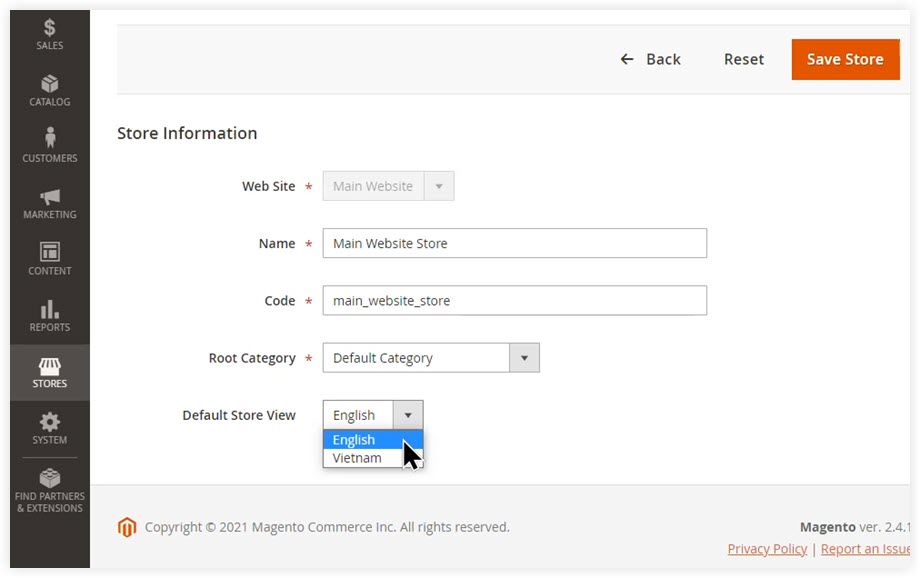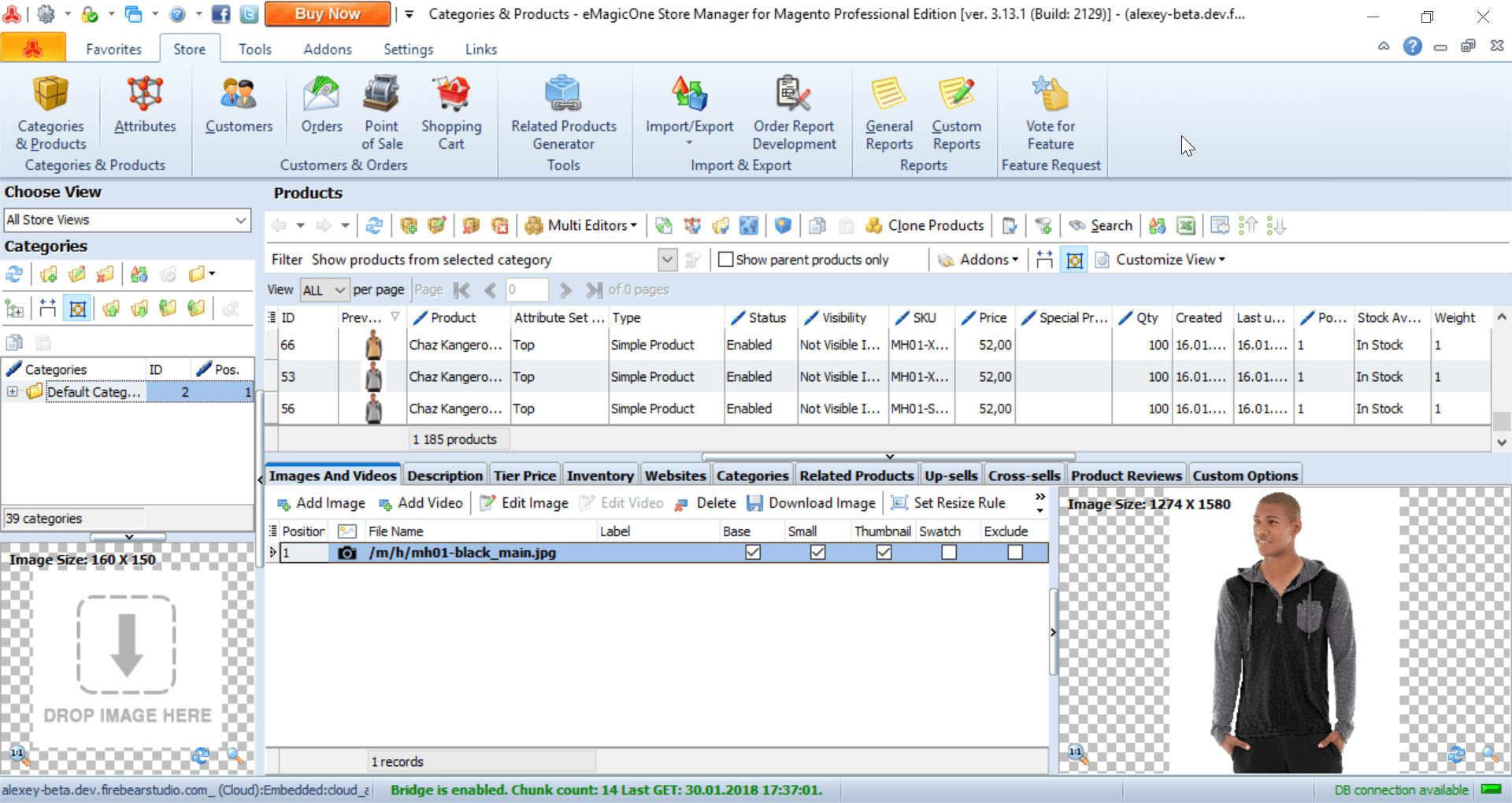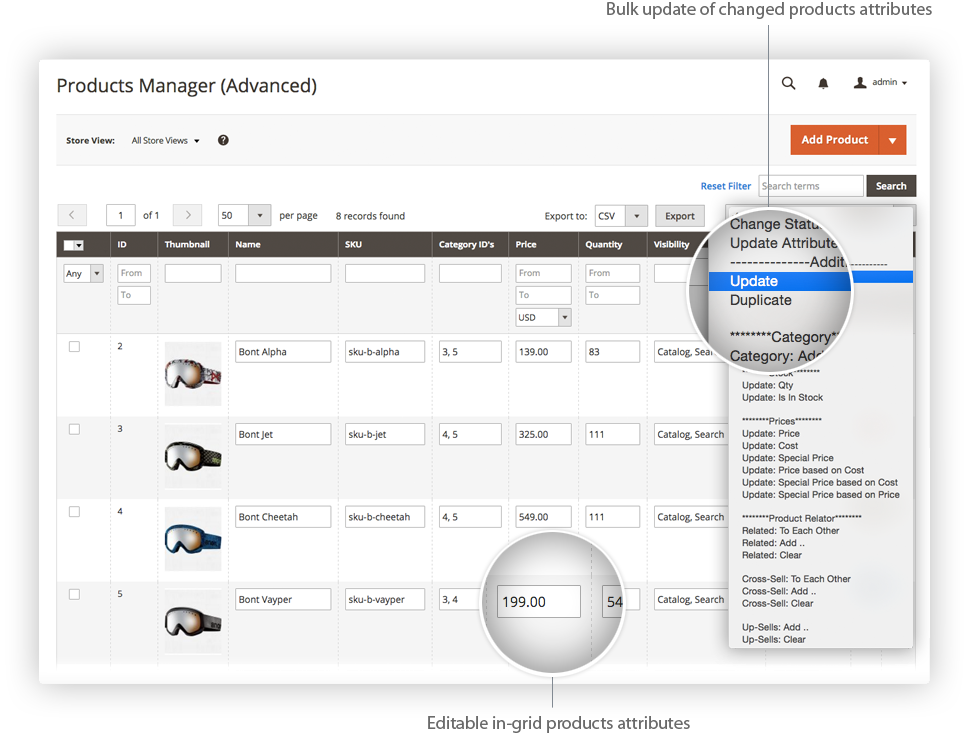
- #Store manager for magento find and replace for free#
- #Store manager for magento find and replace how to#
- #Store manager for magento find and replace update#
- #Store manager for magento find and replace code#
You are not limited to standard tracking tags. Standard ecommerce tracking tags also allow you to monitor when a shopper adds or removes items from a cart, makes checkouts and purchases, views and clicks on promotions, and adds items to a wishlist. Additionally, a store owner can track when customer adds payment and shipping info. Get the support of all standard ecommerce tags and track such customer actions as product/item list views/impressions, product/item list clicks, product/item detail views. You can easily implement all available Google Universal Analytics and Google Analytics 4 (GA4) eCommerce reporting features in your store. This information is key to enhancing marketing strategy and your store's design. You will know when he or she adds or removes items from the shopping cart, etc. This module brings a number of benefits:Įcommerce Tracking that becomes available when using Google Tag Manager module, allows you to see what products customers are viewing in Google Analytics. Module benefitsīy installing a Google Tag Manager extension, a Magento 2 store gets access to detailed tracking of customer actions during his shopping process. It is an easy tool to embed, which opens access to Google Universal Analytics and Google Analytics 4 enhanced ecommerce reports. Using the Google Tag Manager extension, a store owner gets the ability to track almost every action a customer makes in a store. Those tags will serve as a data source for Google Analytics Enhanced Ecommerce reports.Įnhanced Ecommerce allows you to get a deep in-store traffic analysis, learn customer behavior in detail, and make corresponding marketing corrections to boost sales in the store and increase ROI. With Google Tag Manager extension from Mirasvit, marketers get the ability to add tags without asking for the help of webmasters.
#Store manager for magento find and replace update#
It also may increase risk of problems in the future when a new Magento version will update modified files.

#Store manager for magento find and replace code#
Store owners that use Magento Open Source can embed Google Tag Manager by editing the source code of the store, which requires deep technical knowledge.

The free, and therefore, much more popular Magento Open Source version does not include Google Tag Manager integration. Business value of the moduleĪ default Magento platform provides Google Tag Manager integration only for the Magento Commerce version. In order to use Google Tag Manager and Google Analytics, it is required to get accounts in both of these services. Google Tag Manager transfers all collected data on in-store events to Google Analytics, Google Enhanced Ecommerce and other reporting solutions. It provides a convenient web interface for managing Tags, adding them to the site. Google provides such a service for free, which is known as Google Tag Manager (GTM). The main issues with Tags can be mitigated by using a third-party Tag managing service. Tag execution can also slow down the online store. Here is an example of a webpage without any tracking tag: Īfter adding tracking tag, the source code of this page transforms into this code: Įmbedding Tags into a store source code requires deep technical knowledge and it may complicate store support in future. They are special snippets of code that track the event they are configured for, and provide data for extended analytics. Tracking of customer in-store behavior can be done through Tags.

Knowing a customer's path inside the store is an invaluable feature for improving marketing efforts and maximizing ROI. Standard reports that Magento provides to store owners, namely Product Views, Products in Carts, Orders Report, Top Search Terms and others, are often not enough to get a clear picture of what is actually happening in the store.īasic reports show a summary of events during some time period, but they don't allow you to track the exact customer's path that leads to purchase or cart abandonment.

This article elaborates on the extension in detail: The extension requires little initial configuration, and after that, it simply works on its own, providing data for enhanced reports in Google Analytics. It will help to get profound analysis of customer in-store behavior without deep technical knowledge. The answer is the new Google Tag Manager extension.
#Store manager for magento find and replace how to#
The missing link is how to connect a Magento 2 store to Google Analytics to get enhanced ecommerce reports.
#Store manager for magento find and replace for free#
Data is being constantly generated by its customers, and the powerful analytic toolset of Google Analytics is available for free to analyze this data. A Magento 2 store can get a boost by analyzing bottlenecks in its shopping process.


 0 kommentar(er)
0 kommentar(er)
